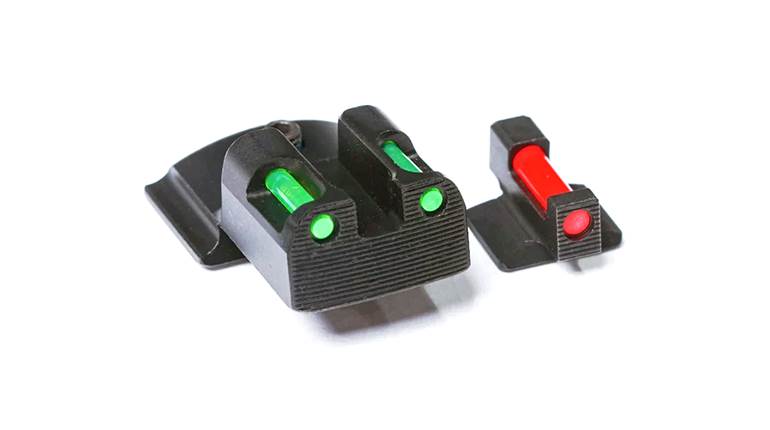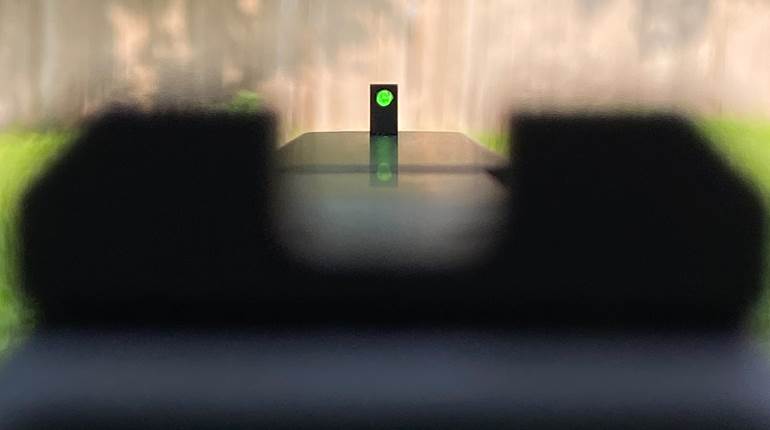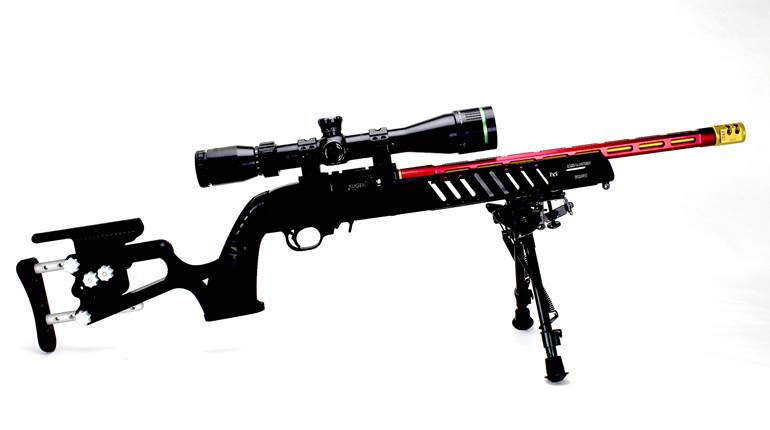
This article was originally published in American Rifleman, January 1992
It has been more than two decades since the Oxford Lightning Illuminated Gunsight became the first “dot sight'” tested here (see January 1969, p. 53).
The Oxford was a product clearly ahead of its time and faded into obscurity. But the red dot sight concept was revived by Aimpoint and has been steadily refined by that firm and others since then, with the sights shrinking from grotesque boxes to units as small or smaller than conventional scopes.

The process has been taken to what must be close to its logical extreme in the new EPC Subminiature Electronic Dot Sight. EPC stands for Electro Prismatic Collimators, and it is a division of a British firm that makes electro-optical equipment for cannon and other such military uses.
The EPC sight is strikingly smaller than even the newest generation of dot sights—just .4” high, 1.5” long and .95” wide. The unit's total weight is just 216 grs.—less than 1/2 oz.
This last dimension is the most important, since it allows the EPC to use a most unusual mounting system—it simply is glued onto the gun. The manufacturer provides six Kevlar-reinforced mounting strips it claims will fit almost any gun.
One of these is selected by trial and error and bonded to a cleaned surface of the gun with a two-part adhesive used in the aerospace industry. The sight itself then is glued to the mount strip.
The adhesive becomes tacky in a few minutes, allowing the sight to be aligned with the gun's iron sights. Small adjustments can be made even after the glue dries overnight.
The sight can be removed by separating it from the mount strip with a supplied tool, and the strip can be removed from the gun in the same fashion. Any excess adhesive can be removed with acetone or nail polish remover.
The sight itself is essentially rectangular with a projection that contains the battery compartment and on-off switch. The optics are a solid glass prism cemented to a reflector, both glued into a Kevlar-reinforced outer body.
The viewing surface is on the end opposite the on-off switch and is a square .322” on a side. At the front of the unit is the gold-colored reflector surface and a light sensor that adjusts the dot intensity for various light conditions. Interestingly, the range of intensities seemed to have no effect on the size of the dot.
The unit is switched on or off by: sliding the, side-mounted switch. It is positioned in such a way that the sight body can be grasped while switching, presumably reducing stress on the mounting. The cover is moved forward to turn on the unit.

The switch cover can be removed by moving it to a central position and prying it off. This exposes the switch end cap that retains the two NR48 hearing-aid batteries that power the unit. The cover can be used to remove the end cap when changing batteries.
The end cap serves an additional function. With the cover removed, it can be pressed in to turn on the light. The cover then can be replaced with its slot outside the end cap's flange. This deactivates the on-off switch.
The manufacturer calls this the “Combat Switch Position” for use when inadvertent switching off is to be avoided.
Normal function is restored by returning the switch cover and end cap to their original positions.
EPC claims the batteries will last about 18 hours at maximum output (as in bright sunlight) and will survive up to 800 hours in darkness if the gun is put away with the unit on.
Our test unit was installed in front of the rear sight of a Colt Combat Commander .45 and fired 175 rounds with a combination of CCI Blazer 200-gr. TMJ, Remington 185-gr. +P and Uzi 230-gr. “hardball” ammunition. The unit remained securely attached throughout, and there seemed to be no loss of zero.
All dot sights take a little getting used to, and the familiarization period with the EPC is a bit longer than that for its larger relatives, since locating the dot in the small field of view isn't easy at first.
On the other hand, once a natural point of aim is gained, the dot pops right into view, even in rapid firing. The gun's iron sights help in this process.
The sight is not especially bright in outdoor range conditions, but is quite acceptable in indoor light. The fact that it blocks out so little of the target area around the point of aim makes rapid target acquisition easy.
We had just two minor complaints about the unit. We found that the inertia of the switch cover caused the unit to turn itself off during recoil. This was solved by using the “Combat Switch Position” described above. The front of the sight also gets dirty very quickly when mounted behind a .45's ejection port. While it is easily wiped clean with a finger, the manufacturer advises that competition shooters may want to mount the sight in front of the port.
While the EPC's most obvious application is for pistols and revolvers, it can be installed on rifles and shotguns, and we suspect it could be a useful teaching tool on the latter.
The EPC sight, then, cuts the dot sight down to what may be the irreducible limit in size and weight, and at a very reasonable price.
Available from: EPC, 408 N. Market St., Lancaster, Pa. 17603 Price: $136






































